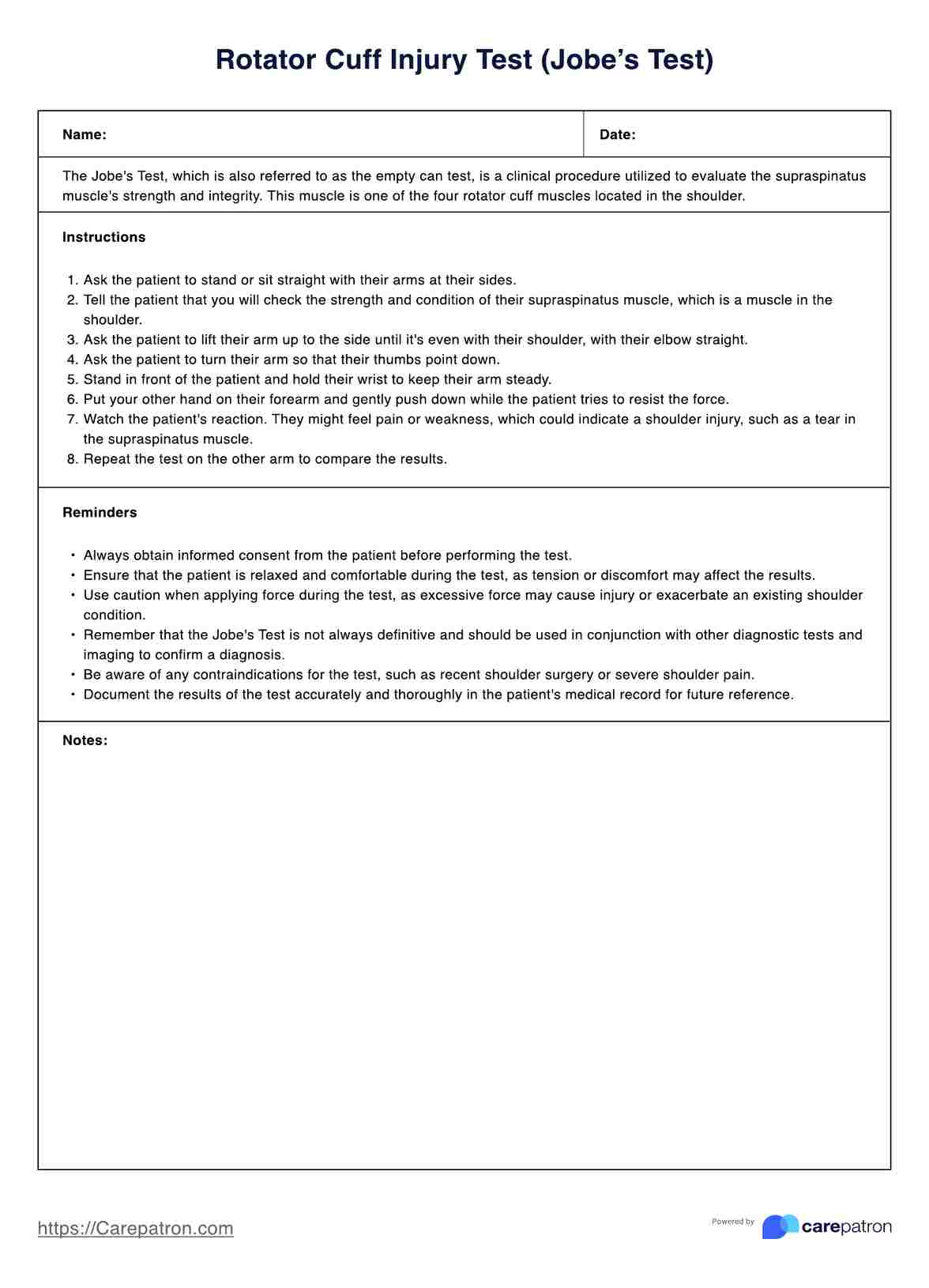Explain the test to your patient and set expectations for the outcome. Then, conduct the Jobe's Test by slowly and steadily raising the patient's arm against resistance with their palms facing the floor. Make sure to monitor your patient’s response while you are conducting the test. Once you have finished the assessment, check for any further damage or instability in the shoulder joint.

Rotator Cuff Injury Test (Jobe's Test)
Wondering how to assess a rotator cuff injury? Learn more about the Jobe's Test, a rotator cuff injury test, and how to complete it with our free PDF guide.
Rotator Cuff Injury Test (Jobe's Test) Template
Commonly asked questions
Interpret the Rotator Cuff Injury Test by noting any pain or weakness in the shoulder joint. If your patient experiences any instability, this could indicate a rotator cuff tear or impingement.
The Rotator Cuff Injury Test offers numerous benefits. It can help healthcare professionals easily assess the shoulder joint for any tears or impingements. It can also help track progress over time, and it helps patients better understand their shoulder injury and associated treatments.
EHR and practice management software
Get started for free
*No credit card required
Free
$0/usd
Unlimited clients
Telehealth
1GB of storage
Client portal text
Automated billing and online payments











